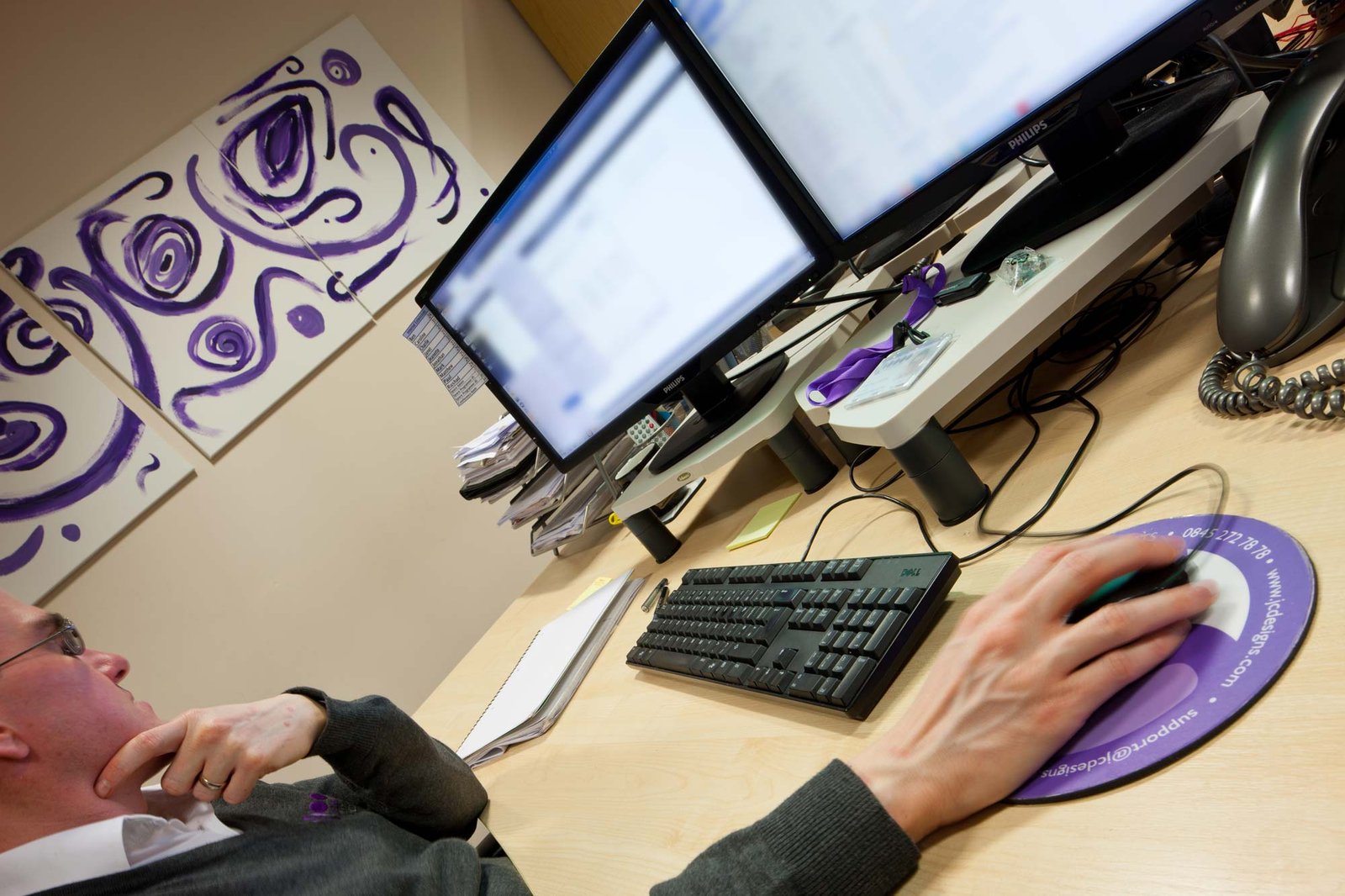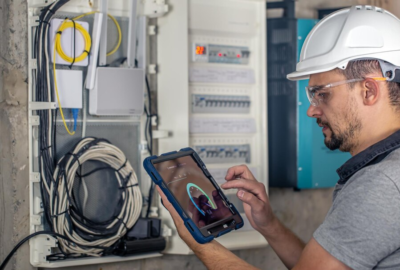Braintree’s Guide to Expert Computer Keyboard and Mouse Repair
Trying DIY computer keyboard and mouse repairs? Let us help. You first need to check for connectivity, inspect for dedicated buttons, replace batteries, ensure correct dongle insertion, activate wireless modes, and test the USB ports. After completing these basic steps, you’ll have a clear indication of whether it is a hardware or software problem.
For software fixes, you can start with a simple computer reboot, or you can use an advanced method of system restores. Updating your drivers and running hardware and device troubleshooters are proven to be helpful for fixing your computer keyboard and mouse. These simple steps make sure that you confidently navigate the troubleshooting process.
Fixing General Connection Issues
One of the most frequent problems users face is general connection issues. Before diving into complex troubleshooting, computer repair experts suggest starting with the basics.
1. Look for buttons: Check your keyboard and mouse for any dedicated buttons related to connectivity. Sometimes, devices come with a button that needs to be pressed for them to connect to the computer. If such a button exists, press it and watch if the issue continues.
2. Replacing the batteries: Often overlooked, low battery levels can lead to connectivity problems. Replace the batteries in your wireless keyboard and mouse, ensuring they have sufficient power to establish a stable connection with your computer.
3. Correctly insert the wireless dongle: If you’re using wireless components, ensure that the dongle is correctly inserted into a functioning USB port. A loose or incorrectly inserted dongle can lead to connectivity issues.
4. Activate the wireless receiver: Some wireless devices have different modes of connectivity. Check the user manual for your keyboard and mouse to activate the correct mode for optimal performance.
5. Test other functioning USB devices: To rule out issues with the USB ports on your computer, try connecting other USB devices. If they work properly, the problem may be specific to your keyboard or mouse.
Rule Out if It’s a Hardware or Software Issue
Before proceeding further, it’s really important to determine whether the issue is hardware-related or a software glitch.
If the problem persists after the basic checks, consider the following ways recommended by computer repair specialists in Braintree:
Try Software Fixes
Reboot The Computer:
Sometimes, a simple reboot can resolve connectivity issues. Restart your computer and check if the keyboard and mouse work as expected.
- Click on the “Start” menu in the bottom left corner of your screen.
- Select the “Power” option.
- Choose “Restart” from the dropdown menu.
System Restore:
If the problem started recently, performing a system restore to a point when the peripherals were working fine might resolve the issue.
- Click on the “Start” menu, type “Create a restore point” in the search bar and select it from the search results.
- In the System Properties window, click on the “System Restore” button.
Update Your Drivers:
Computer repair specialists in Braintree know that outdated or incompatible drivers can lead to connectivity problems. Visit the manufacturer’s website for your keyboard and mouse to download and install the latest drivers.
- Right-click on the “Start” button and select “Device Manager.”
- Locate and expand the “Keyboards” and “Mice and other pointing devices” categories.
- Right-click on your keyboard and mouse devices individually and select “Update driver.”
Run Hardware and Devices Troubleshooter:
Windows has built-in troubleshooters that can automatically detect and fix common issues. Run the Hardware and Devices troubleshooter to identify and resolve problems with your peripherals.
- Press the “Windows key + I” to open the Settings menu.
- Select “Update & Security.”
- Click on “Troubleshoot” in the left sidebar.
- Scroll down and click on “Hardware and Devices.”
- Click on “Run the troubleshooter” and follow the on-screen instructions.
Conclusion
Computer repair can be a manageable task, especially when it comes to keyboard and mouse issues. By following these expert steps, you can diagnose and fix connectivity problems efficiently. Remember, a systematic approach, starting from basic checks to software troubleshooting, can often resolve the issue without the need for professional assistance.
FAQs
Q1: Why is my wireless keyboard not connecting to my computer?
A1: There can be different reasons behind that, including the connectivity button on your keyboard glitching or low battery.
Q2: What should I do if my keyboard and mouse work in Safe Mode but not in normal mode?
A2: In this case, the issue is likely caused by third-party software or drivers. Update your drivers, uninstall any recently installed programs, or perform a system restore to a point when the components are working fine.
Q3: How often should I update my keyboard and mouse drivers?
A3: It’s advisable to check for driver updates periodically, especially if you’re experiencing connectivity issues. And if you need any help, you can contact a computer repair expert in Braintree.









